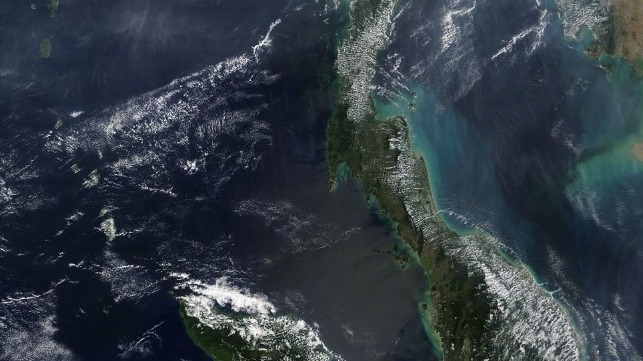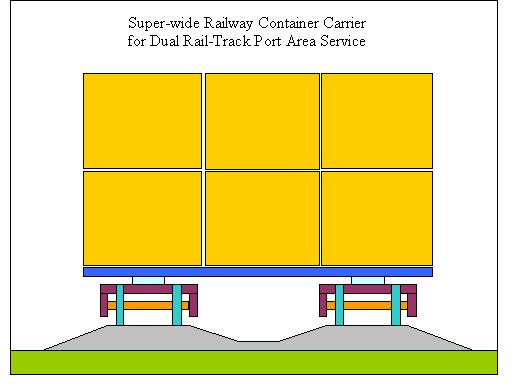Kra Canal Revisited: Transshipment Potential of the Thai Land Bridge

The government of Thailand has committed to develop a land bridge at the Isthmus of Kra, located between the Gulf of Thailand and the Andaman Sea. There is potential for such a land bridge to service certain types of bulk freight and container transfer operations.
Introduction
The idea of building a canal at Thailand’s Isthmus of Kra dates back over two centuries. The objective is to offer a shorter sea route between Shanghai and Europe. At the present day, ships that carry east-west trade from China, South Korea, Taiwan or Japan to destinations located in India, the Middle East, Europe, Asia and the Atlantic coast of the North America sail either via the Strait of Malacca or Strait of Selat Sunda. A navigation canal built through the Isthmus of Kra could reduce sailing distance to several destination ports by up to two days.
It is possible to build both natural gas and oil pipelines across the Isthmus of Kra, along with oil storage and natural gas storage facilities at either end. Experience in North America involving oil and natural gas transportation has shown that pipelines tend to be the more cost-competitive alternative. While there is potential to develop container transshipment operations across the Isthmus of Kra, the choice of overland transportation technology will decide the future cost competitiveness of such operations. Even in North America, waterway transportation involves lower per container transportation cost when carrying over 100 TEU.
Land Bridge Technology
While Thailand State Railways currently operates meter gauge railway lines, a wider gauge would allow for the operation of double stacked containers along the proposed dual-track railway line. The Hyperloop is one possible alternative technology that purports to be able to rapidly move containers between origin and destination, at competitive cost. Another option would be to engage railway engineering researchers to study possibilities involving quadruple track technology, where super-wide railway carriages of three-TEU widths by four-TEU lengths could each carry between two to three levels of containers, allowing 12 to 18 forty-foot boxes per car.
While Thailand’s meter gauge railway lines have served the needs of the nation well, a wider gauge offers advantages that include double stacked operation of containers. In North American operation, containers trains operating forward and mid-train locomotives can pull up to 150-freight cars that include the extended length container cars capable of each carrying two levels (or four TEU). Such operation suggests up to 600 40-ft containers per train. A future extreme concept railway technology involving parallel sets of tracks each built to the meter gauge, with the width of each super-wide car extending over the parallel sets of tracks.
Each of the super-wide railway cars would couple via central couplers. The central track on which locomotives travel would be meter gauge, with each of the outer tracks on which super-wide cars travel would also be the meter gauge. Following North American unit train practice, locomotives would be spread throughout each container train. This arrangement could move up to 900 forty-foot containers for every 50-car section of train, with a four-section train propelled by four-groups of locomotives moving up to 3,600 containers. University railway research departments would need to undertake further research to make the concept workable.
Illustration courtesy of the author
Trans-Kra Container Transshipment
While a substantial volume of container transshipment occurs at Singapore and at nearby Tejung Pelepas, future maritime container trade is projected to increase over the next two to three decades. Future expansion of international container maritime shipping provides a basis by which to explore the possibility of trans-Kra container transshipment. Plans are already underway to develop a deep-sea port at Chumphon on the Gulf of Thailand and a companion deep-sea port at Ranong on the Andaman Sea, which could become the eastern terminus for future mega-size container ships of 28,000 to 35,000 TEU.
Smaller container ships sailing from southern China, South Korea, Taiwan, Philippines and Japan could arrive at a future Port of Chumphon and transfer containers at comparatively low per-container cost to a future trans-Kra land bridge. The containers would arrive at Ranong to be transferred to mega-size container ships that would sail to numerous Mediterranean and European destinations, and potentially to the U.S. East Coast. Future research could determine the extent to which increased maritime container transportation would enhance the competitiveness of trans-Kra container transshipment.
Conclusions
A credible business case may be made for diverting bulk transportation such as oil and natural gas via a future Kra land bridge. Future projected growth in international container shipping suggests that relevant authorities should at least consider the possibility of container transshipment via a future Kra land bridge. Continued long-term future growth in container shipping could push transshipment terminals at Singapore and Tejung Pelepas to maximum operational capacity. A future need to expand container transshipment capacity at other regional terminals provides the basis by which to evaluate future Asian container transshipment via the Kra land bridge.
The opinions expressed herein are the author's and not necessarily those of The Maritime Executive.

